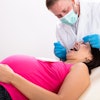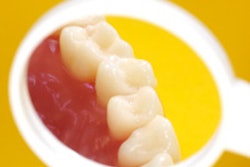The Forsyth Institute has received $20.7 million in funding from the National Institute of Dental and Craniofacial Research to fight periodontal disease, the institute announced.
Over the next four years, three related projects will study periodontal disease progression from microbiological, genetic, host immune response, and clinical perspectives, according to the institute. The goal is to gain an understanding of why people develop gum disease, how the disease progresses, how to predict active disease before it occurs, and ultimately, how therapies can be developed to improve periodontal and overall health.
Previous work at Forsyth has demonstrated that the progression of periodontal disease is not continuous but episodic. Thus, to understand its pathogenesis, patients must be studied to identify sites in the mouth that are undergoing active disease progression.
The Forsyth projects will examine clinical parameters, expression of host derived molecules, bacterial ecology, and bacterial gene expression during active disease. They will also seek to identify biomarkers in blood, saliva, and gingival crevicular fluid (a fluid that oozes from the gum margin) samples from 500 individuals, both with and without existing gum disease.
The data gathered by Forsyth's scientists, along with portions of the samples, will be made available to the scientific community and will represent the largest available information base and depository of samples for periodontal disease, the institute noted.
The three projects were funded due to the strength of each projects and the overall potential impact of the collaborative research. The Forsyth team will also work with four other oral health research centers around the country. The Michigan Center for Oral Health Research is the first clinical research partner. Four additional research facilities will join the project shortly.
Project overviews:
Biomarkers of Periodontal Disease Progression
This project, led by Ricardo Teles, D.D.S., D.M.Sc., received a grant of $12.7 million over four years. In his work, Dr. Teles will study microbial and host-derived biomarkers to determine if someone is likely to develop gum disease or if existing disease is likely to worsen. The long-term goal to develop a point-of-care diagnostic test to help clinicians identify sites and/or subjects that are susceptible to periodontal disease progression. Currently, there are no rapid tests for identifying these worsening periodontal sites and subjects in a clinical setting. Better biomarkers of periodontal disease activity are urgently needed to improve periodontal disease diagnosis, guide therapy, monitor activity, and evaluate treatment response.
Oral Microbial Biomarkers in Periodontal Disease Progression
This project, which received an award of $4 million over four years, will look at oral microbial profiles every two months to see what bacteria are present when gum disease progresses. The long-term goal of the proposed research is to be able to diagnose and predict periodontal disease before clinical symptoms of the disease develop. This project will employ a recently developed human oral microbial identification microarray (HOMIM) that can simultaneously identify 325 of the most prevalent oral bacteria, including many that cannot yet be grown in the laboratory. Although it is known that there are marked differences in the microbial composition of plaque from healthy sites as compared to those sites with periodontal disease, the microbial profiles of healthy sites that progress to active disease are yet unknown. Ultimately, the outcome of this research has great promise for bench-to-chairside applications in which clinicians will be able to determine and treat those periodontal sites at risk for disease on the basis of microbial composition.
Metatranscriptome of the Oral Microbiome During Periodontal Disease Progression
The goal of this project is to identify in situ the molecular mechanisms of bacterial pathogenesis by which periodontitis progresses in some sites while in others the disease remains latent. Metagenomic and metatranscriptomic analysis (gene expression analysis of entire complex bacterial communities in situ) provides the information required to understand the activity and relative importance of the tens of thousands of genes that are expressed in the pathogenic biofilm during periodontal progression. Identification of critical genes that are required for pathogenesis and information about their differential expression can be used to develop novel targeted approaches to early-stage diagnosis, treatment, monitoring, and prevention.
Copyright © 2010 DrBicuspid.com



















